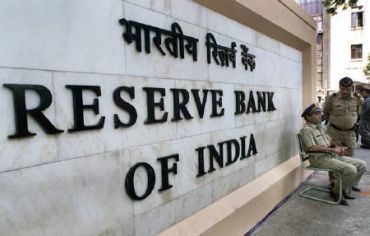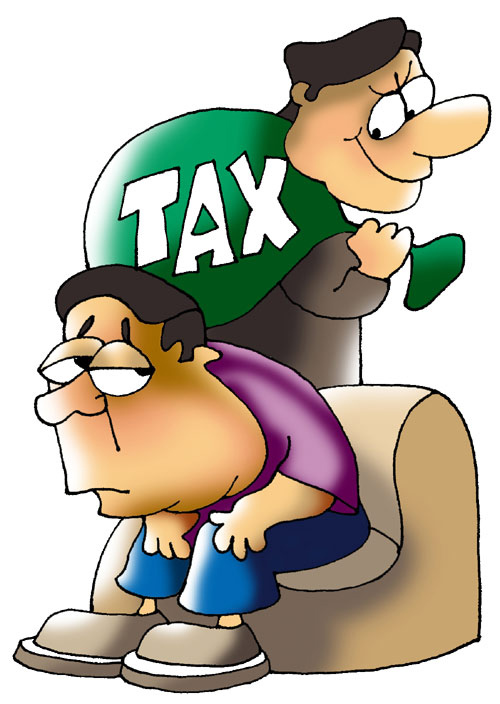 Today, like a patient with a protracted illness, the recovery will need to be carefully managed, notes Prem Shankar Jha
Today, like a patient with a protracted illness, the recovery will need to be carefully managed, notes Prem Shankar Jha
When Reserve Bank of India Governor Raghuram Rajan tightened RBI rules last April to make commercial banks 'provision', i.e. set aside, more funds against bad debt in their balance sheets, he let a long-dormant genie out of the bottle.
This is the extent to which the banking system's capacity to fund economic growth has been eroded by the six-year slowdown in the Indian economy.
The adjusted balance sheets for the country's 39 publicly traded banks (private, nationalised and the SBI) show that non-performing assets, i.e debt on which the banks are not able to recover their interest and amortisation, now amount to a whopping Rs 438,000 crore (Rs 4,380 billion).
Since these banks have not finished cleaning up their accounts, the true figure is probably even higher.
His timely reform may save the country from a financial meltdown, but it has thrown into glaring relief how close the economy now is to a collapse.
For the bad debt is not a banking problem alone.
It needs to be seen alongside the country's five-year industrial crawl at three per cent a year, its spreading industrial junkyard of Rs 880,000 crore (Rs 8,800 billion) worth of abandoned projects, and the 63 million young persons who have entered the job market in the past six years with virtually no hope of employment.
How has the economy come so close to collapse in the first place?
The RBI has placed the blame at the feet of corrupt, venal and overambitious promoters of new ventures who have hugely over-leveraged small amounts of equity capital with vast amounts of debt, and now can't or don't want to pay the servicing charges.
Force them to sell out to more soundly financed companies, and the problem will be over.
Mr Rajan himself set the ball of blame rolling in 2013 by remarking, "Promoters do not have a divine right to stay in charge regardless of how badly they mismanage an enterprise, nor do they have the right to use the banking system to recapitalise their failed ventures".
Policy makers in North Block, by contrast, are putting most of the blame on the poor quality of managers in the public sector banks and pinning their hopes on selling up to half of their shares and inducting more independent professionals onto their boards.
But this argument too is largely specious, for while the proportion of bad debt is higher in the public sector banks, it is now rising at a faster pace in the private sector.
This is because a larger share of their loans is concentrated in heavy industry and infrastructure projects.
The longer gestation period in them means that their insolvency takes longer to surface.
What both North Block and Dalal Street are ignoring is the all-pervasiveness of the crisis.
This is a clear signal that it is not episodic but systemic.
Further evidence comes from the rapidity with which restructured loans, designed to give managers a chance to make a fresh start, are also going bad.
On May 21 last year the Australia-based financial consultants, Macquarie Group, reported that in 2014-15, Rs 57,000 crore (Rs 570 billion) of restructured loans had gone bad again.
This was double the amount that had gone bad the previous year.
The fate of another Rs 290,000 crore (Rs 2,900 billion) of such loans hung in the balance.
Standard & Poor's has predicted that another record portion will fail in 2015-16.
Macquarie called this debt a 'ticking time bomb'.
If the crisis pervades the entire economic system then its cause, almost by definition, must lie outside the system.
The only place left where this can be is in the policies adopted by the government.
The Modi government recognises this but has put all the blame on structural deficiencies in the economy such as its poor infrastructure, its predatory petty bureaucracy, and plethora of environmental clearances.
All these exist, but cannot explain why capacity utilisation in industry is at only 70 per cent and falling.
The only explanation for this is a lack of demand, and the only possible cause of this in turn is the regime of cripplingly high interest rates maintained, on one pretext or another, by the RBI since 2010.
Bringing these down has been anathema to an inflation-obsessed RBI.
But since nothing it has done has either revived growth, stabilised the exchange rate, or indeed brought down the cost of living index, it is time to ask ourselves what will happen if Arun Jaitley forces the RBI to bring down policy interest rates to the point where they halve the current 11 per cent-plus average cost of borrowing.
The first consequence will be a revival of instalment-plan consumer spending.
Aided by the Rs 103,000-crore (Rs 1,030-billion) Pay Commission award, the entire consumer durables, automotive, home and office equipment and construction industries will spring to life.
With all-round consumer demand growing once more, the investment outlook will brighten.
Investors with stalled projects and mounting bad debt will refinance their loans to bring down their interest cost burden and become solvent once more.
Infrastructure and construction projects, which are now the hardest hit, will benefit the most.
Portfolio investors are familiar with this cycle, so they will start buying shares the moment policy interest rates come down.
As share prices rise, investors and fund managers will start shifting out of bank deposits, liquid and debt funds into equities once more.
As the equity market revives, more and more promoters will be able to convert their debt into equity capital without incurring a substantial loss.
We will know that economic recovery has truly set in when large numbers of Initial Public offers begin to hit the stock markets.
From 2012 to 2014 there were, in all, 27 IPOs. In 2007 alone there were 133!
Had this been 2012, when industry first began to beg for a reduction of interest rates, lowering them would have triggered an instant response from the economy.
Today, like a patient with a protracted illness, the recovery will need to be carefully managed.
The government will need to recapitalise the public sector banks, but only to the extent required to allow borrowers to refinance their own loans.
Second, to kick-start the conversion of debt into equity, the government could take a page from President Barack Obama's bailout of the US automobile industry.
In 2009, with both General Motors and Chrysler on the point of declaring bankruptcy and 1.2 million jobs in danger, Mr Obama spent $49.5 billion to purchase 500 million shares of GM, another $1.5 billion bailing out some key ancillary suppliers, and $300 billion in subsidising the replacement of old cars.
Not only was GM saved but three years later the treasury was able to sell the 500 million shares to the public for $39 billion.
What is more, it saved not only the 1.2 million jobs but also earned the treasury $39.4 billion in tax revenues.
Mr Obama showed that thinking out of the box pays. We should not be afraid to do so.
Prem Shankar Jha is a senior journalist











